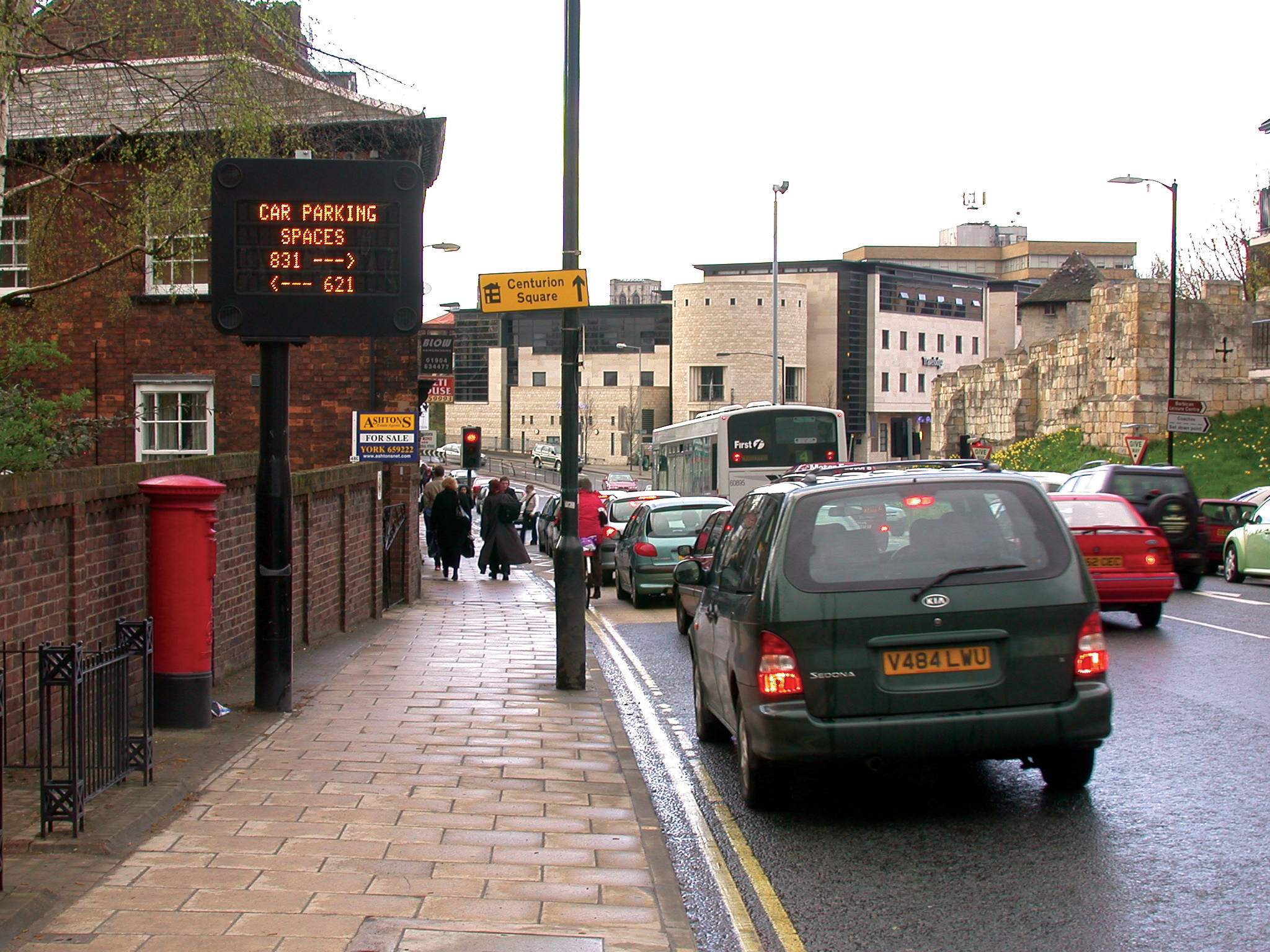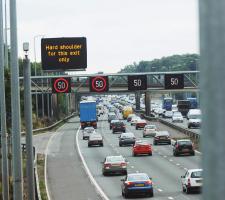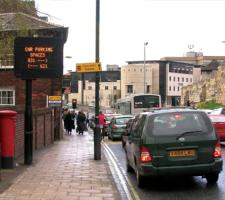
UTMS provides a framework within which co-existing systems for network management can work together
Mark Cartwright, Centaur Consulting, discusses developments in urban traffic management and control
Despite the concept of
In better defining the differences between the two it is perhaps easiest to start with UTC. Unsurprisingly, it is drawn from the term 'control' and design is predicated on the need for a system which tells people when or when not to go. This implies systems which operate mandatorily. 'UTC', therefore, can be regarded as being such systems as area-wide co-ordinated traffic lights and the backing systems and algorithms for their control.
UTMC, by contrast, can be viewed as an attempt to move forward, especially in a networked age. There are a range of co-existing systems such as those for network monitoring, driver/parking information provision, environmental monitoring, road user charging, policing and so on which all contribute to traffic management. UTMC's technical agenda is to provide a framework which will allow these various systems to work together.
Admittedly, when it was originally conceived of in the pre-internet early 1990s it was regarded quite literally as 'UTC with a few add-ons'. However, it has grown quite considerably since; by the time the first specification was drawn up, in 1997, the internet was already upon us and the team responsible had recognised that it was very definitely going to shape the future.
The arrival of the internet meant three things as far as UTMC is concerned. Firstly, it meant that systems could share platforms as they were using similar standards. Secondly, systems were delivering and managing data in similar ways - which meant that users could readily take data out of one system and put it into another. The third effect is not specifically associated with the internet but with open standards, which took away the constant need for reinvention every time a system was being put together. Designers did not have to come up with something new every time, because there was a ready standard to work to. Users, meanwhile, did not have to think about the technical order of things but could just get on with specifying a system able to meet their requirements.
Essentially, UTC is an Intelligent Transport System (ITS) that controls and optimises the flow of traffic in a wide area; UTMC is an open modular framework of standards and specifications. Most major cities in the UK have UTCs which are compliant with UTMC standards.
A relative rarity
Outside the UK, several countries in the Middle East have quite readily adopted UTMC and it has been cited in several procurement documents. One can also find UTMC-type installations in South America, although in both cases UTMC is recognised as an enabling mechanism rather than a 'badged' system in its own right.The logic of UTMC is there for all to see. One can wonder, therefore, why there have been so few similar developments elsewhere. A good explanation is the more entrepreneurial, 'marketplace' environment which exists in the UK as compared to the rest of Western Europe, where a much greater proportion of decisions on methodologies are taken in the municipal environment. Although it might at first seem that deployments elsewhere in Western Europe are more disjointed, the truth is that within individual authorities' jurisdictions systems might well be highly integrated. But quite likely more work will have been needed to tie things together.
International comparisons
UTMC is a UK 'brand' but in truth the internet is global and networking is now a standard practice. There is a lot of commonality between, for example, UTMC and the US's National Transportation Communications for ITS Protocol (NTCIP). Initially, this made things slightly confusing for exporters; there was a risk of confusing matters by having something badged 'UTMC' when in reality UTMC is simply a recognition of the use of open standards in a particular way. The fact is that these 'ways' tend to be similar, though not necessarily identical, worldwide.Happily, this means that, in the international market, whether something was branded 'UMTC' or 'NTCIP' has turned out to be less of a problem than many initially feared. Engineers are finding ways, using UTMC, to design and develop products while also finding ways of addressing international markets. Open standards see to it that the ability of either UTMC or NTCIP to lock off overseas markets to competition is much reduced.
DATEX II - the third way
At the technical level, there is a third system which can be regarded as equivalent to UTMC and NTCIP: Europe's DATEX II.DATEX II grew out of the
The UTMC Development Group has kept a watching brief on developments within DATEX II. As with NTCIP, there are similarities but the systems are not identical.
That DATEX II has now decided that it 'wants' to be the model for how things work down to the local level has some very major positive benefits. For instance, it has Europe-wide mass. On the downside, at least for the UK, it very much sharpens the need to get UTMC in alignment.
It has long been assumed in the UK that UTMC would be used at the local level and DATEX II would be used at the strategic level. The
At a philosophical level, one can see that it is no bad thing when several independent groups of people come to the same conclusions on what is the best way of doing something. It tends to reinforce that the respective groups' thinking is on the right track. Were UTMC, NTCIP or DATEX II to become a world standard down to the local level, that would ease a great many issues. But it is impractical; UTMC application across just a few hundred agencies in the UK has already had some not unsubstantial political ramifications. Such an undertaking on the global scale would be an onerous affair and it is hard to see from an institutional level how convergence could be brought about between UTMC and NTCIP. Both are dynamic entities and it is difficult to see how a 'living' entity which exhibits the liveliness and dexterity of what we already have could exist were it to be global in size. An alternative is to ensure that both talk more freely with each other.
Efforts are being made to improve communication at the institutional level between those responsible for UTMC and DATEX II. The plan is that UTMC will incorporate a UK profile for DATEX II and conversely UTMC's on-ground activities will feed up to DATEX II at the strategic level. The positive side of that approach is that DATEX II's evolution will then be influenced by more than just TERN activity.
Nevertheless, there is still the risk of duplicated effort. DATEX II is trying to do what UTMC has been doing for over a decade, in many respects. It certainly would not be a bad idea if Europe were to adopt UTMC as an appropriate mechanism for the management and control of roads at the local level. Tying everything to a common framework would provide a strategic coherence and make it more likely that the UTMC model would be shared. However, different institutional and operating systems in, for instance, Germany, Italy or France could well mean that something is needed there which differs in shape from UTMC.
Current work
Work goes on to develop UTMC and links with its peer systems. The UTMC Development Group's Specification and Standards Group now includes members from both the HA and CEN, the European Committee for Standardisation. The latter's inclusion is a relatively recent development which recognises the need to take things forward in such a manner.Within UTMC itself, there are some relatively straightforward developments. For example work is going on to incorporate tunnel management systems, there being no data set in existence for these as yet.
Other rather more visionary developments might become a reality in the longer term. These take account of there being quite a number of devices in the public realm from which useful data could be retrieved. Air quality, for example, is not a traffic management issue but it would be perfectly possible to have air quality monitoring systems provide data through the UTMC environment. Parking management is already incorporated into UTMC but there is the opportunity to extend the system to include parking and indeed any types of payment. For example, when paying for parking at a sports facility it could also be possible to simultaneously pay for access to the facility itself. Similarly, at outdoor, unmanned spaces such as local beauty spots and national parks, it might also be possible in the future to buy guidebooks using UTMC-supported devices.













